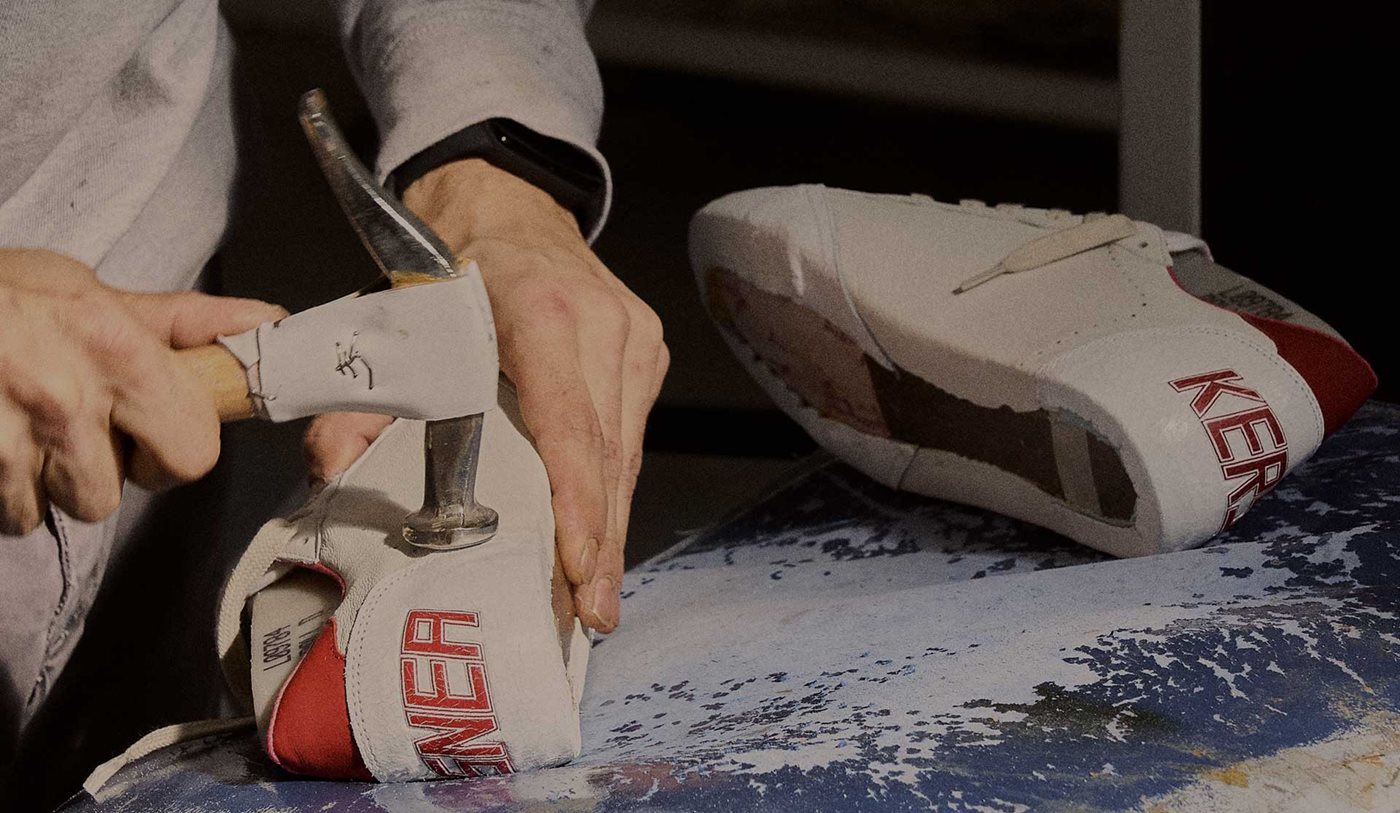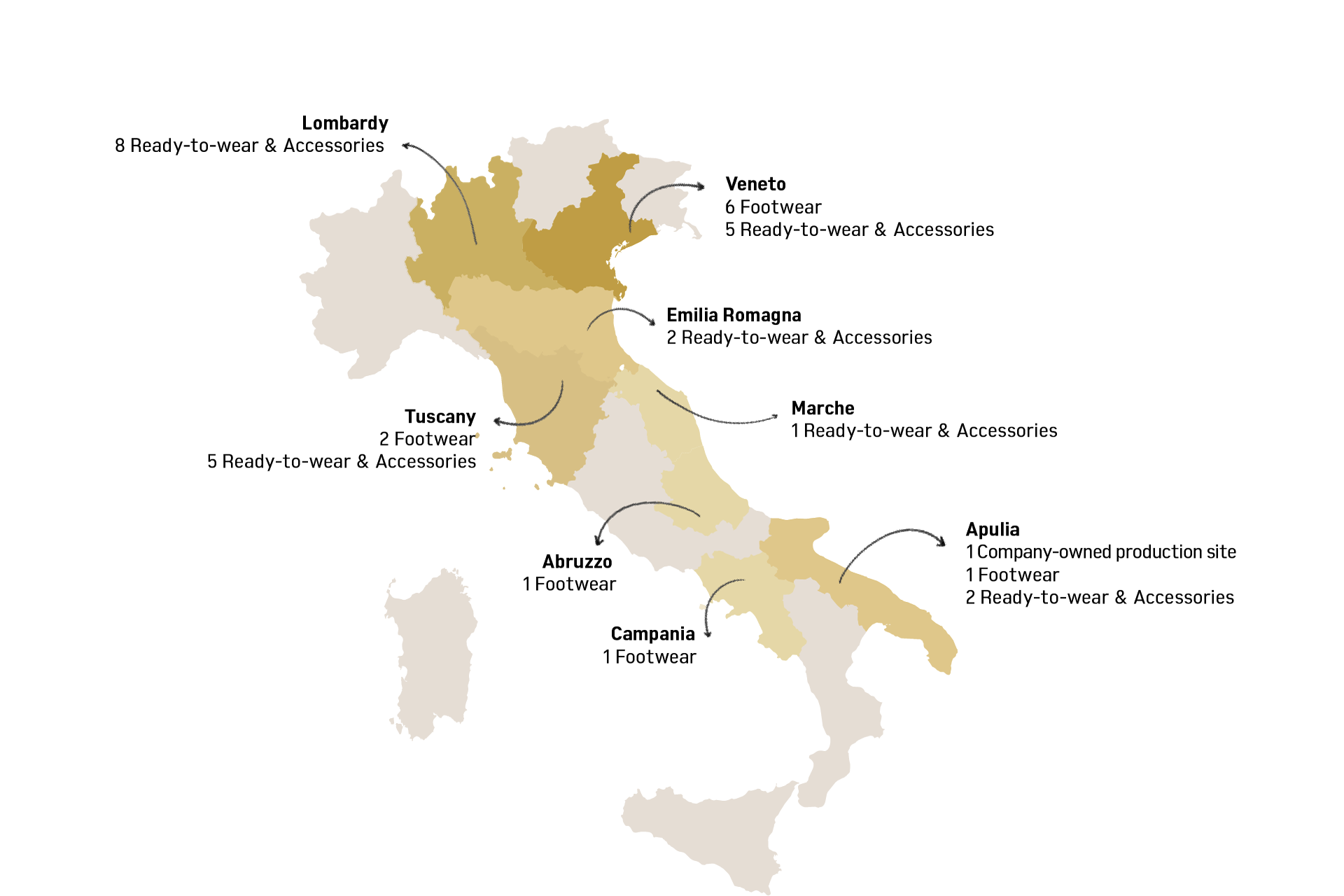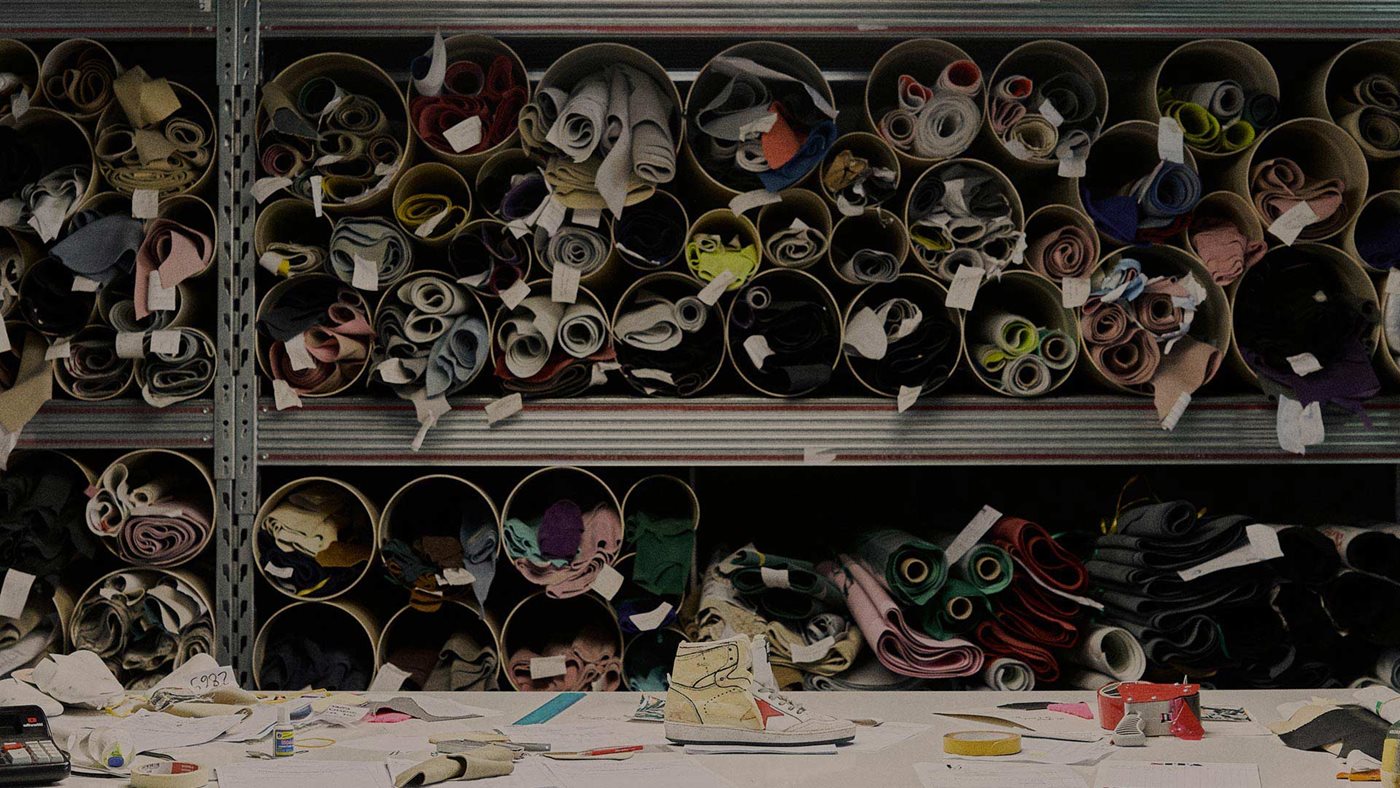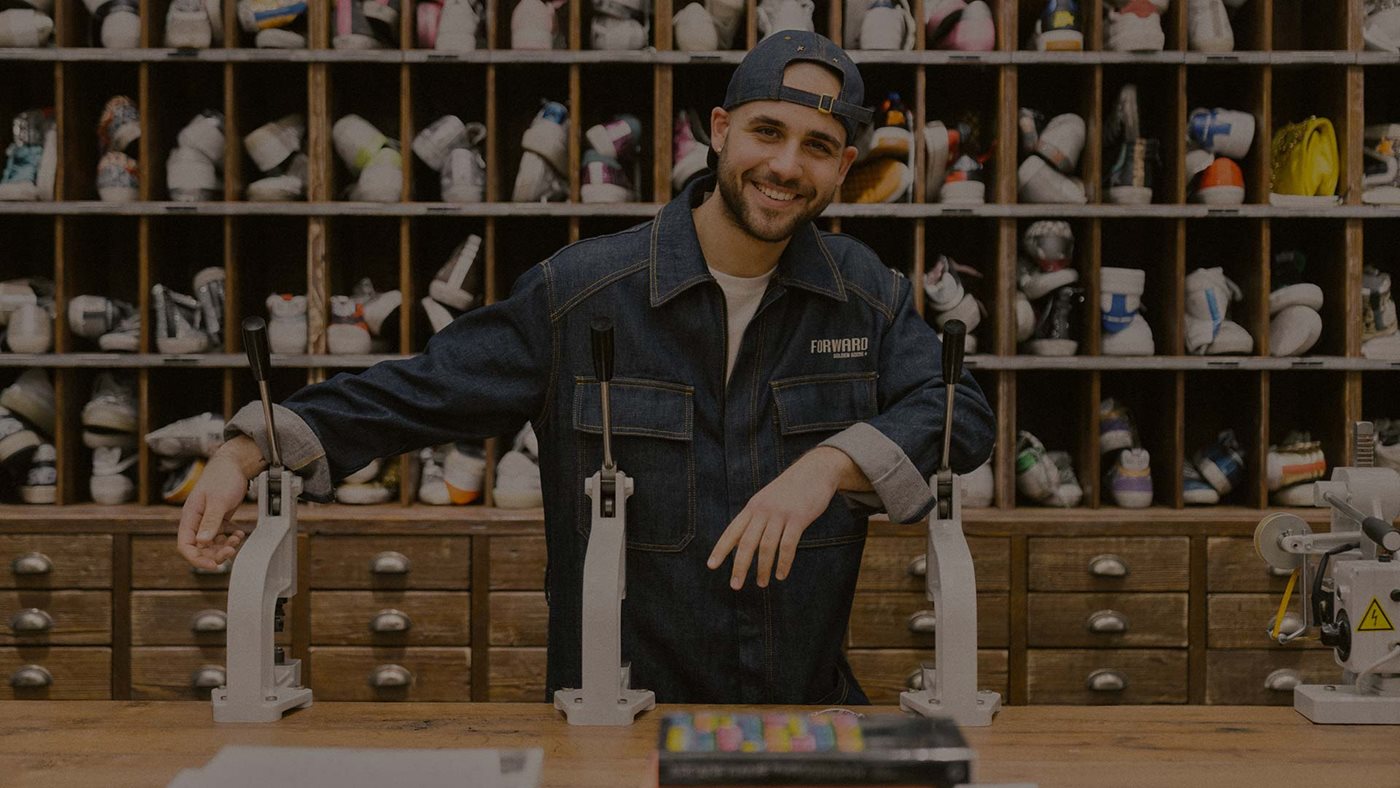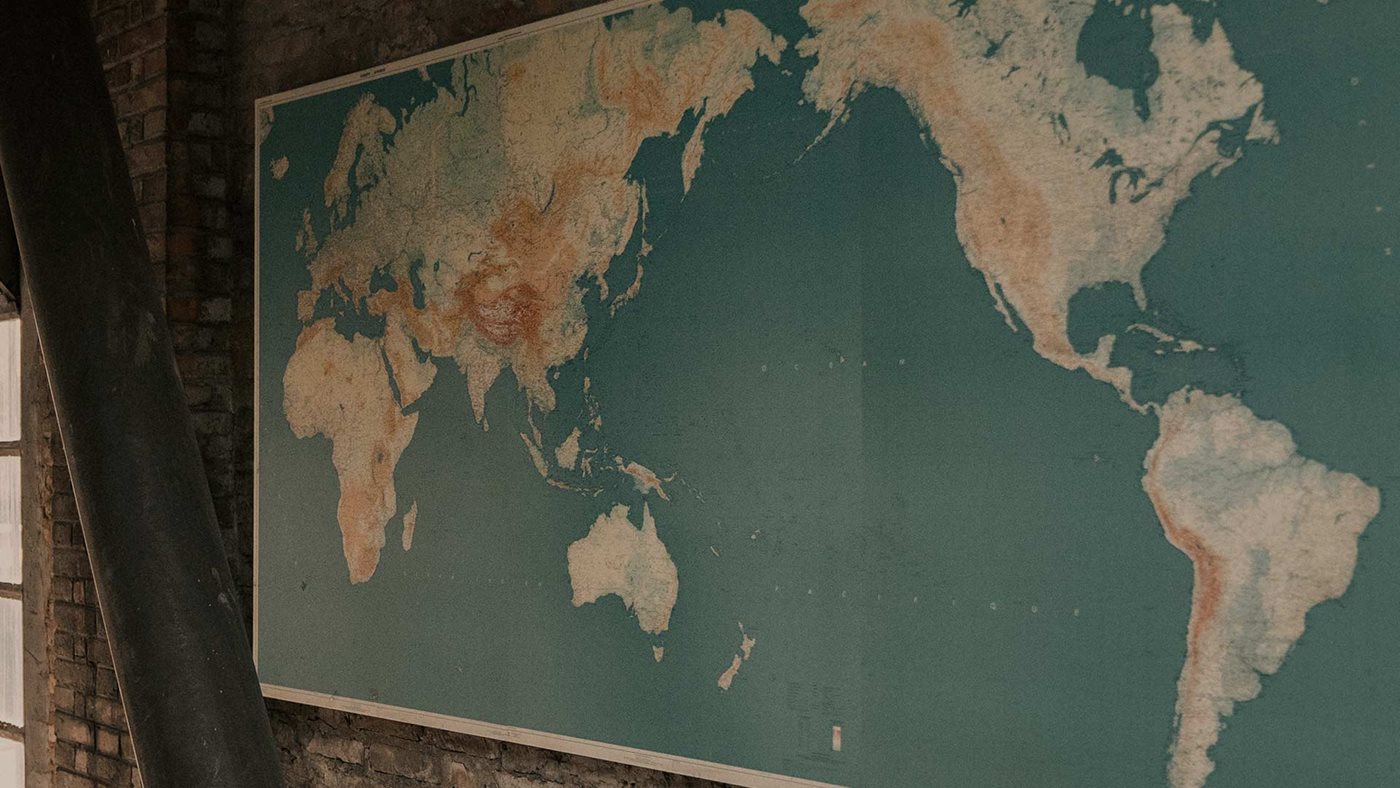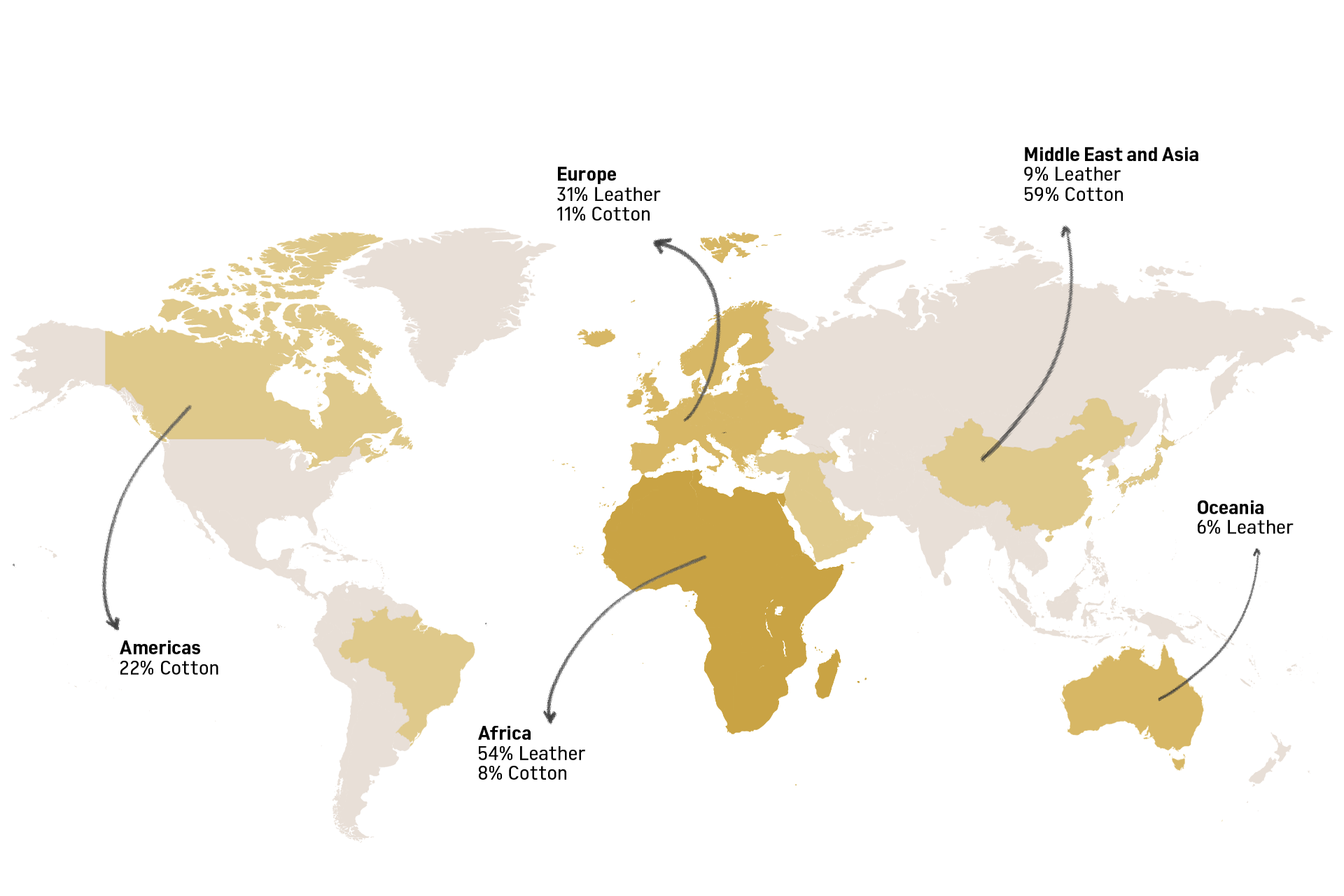We select our suppliers very carefully, engaging with those that not only deliver products of the highest quality, technical excellence, and reliability, but that also - and above all - share our social, ethical, and environmental values and principles.
Ours is a story of innovation and research, deeply rooted in the heritage of Italian craftsmanship and in the solid, long-lasting relationships built over time with our suppliers – true partners that stand out among small-sized enterprises -, with whom we share a strong sense of trust and collaboration. This continuity contributes to the high technical and quality performance of our products, and allows us to be consistent as we plan for long-term growth and development. The production and packaging of our products involve a combination of more than 100 raw material suppliers, garment manufacturers, and finished product suppliers.
The production and packaging of our products involves around 120 suppliers, consisting of raw material suppliers, garment manufacturers, and finished product suppliers according to the type of business (ready-to-wear, footwear or accessories).
For our footwear collections we rely on 12 shoe factories, all located in Italy. Based on our product designs and technical specifications, they are responsible for the overall production and for the sourcing of raw materials from preferred suppliers as per our indications – with the exception of specific materials provided by Golden.
Our ready-to-wear production mainly relies on raw material suppliers that supply fabrics, production accessories (embroidery, buttons, zippers, belts, bands, etc.), and packaging. These raw materials are provided to our garment manufacturers in charge of the realization of our collections. In 2023, we worked with 56 raw material suppliers for our ready-to-wear collections, with nearly all of them based in Italy. Meanwhile, 13 garment manufacturers were involved in the making of our finished products, all located in Italy, where the deep-rooted manufacturing heritage guarantees high technical expertise and adequate production capacity.
As regards accessories (such as bags, belts, fragrances, and jewelry), in 2023 we worked with 11 finished product suppliers, mostly based in Italy.
DIRECT SUPPLIERS' GEOGRAPHIC DISTRIBUTION
Lombardy 8 Ready-to-wear & Accessories
Veneto 6 Footwear 5 Ready-to-wear & Accessories
Emilia Romagna 2 Ready-to-wear & Accessories
Tuscany 2 Footwear 5 Ready-to-wear & Accessories
Marche 1 Ready-to-wear & Accessories
Abruzzo 1 Footwear
Apulia 1 Company-owned production site 1 Footwear 2 Ready-to-wear & Accessories
Campania 1 Footwear
SUPPLIERS BY TYPE
| Finished products | 29 |
| Raw materials | 71 |
SUPPLIERS BY GEOGRAPHIC AREA
| Italy | 93 |
| Europe | 4 |
| Extra EU | 3 |
Craftsmanship, manual work, and Italian tradition are at the heart of the Golden Goose brand, blended with a strong commitment to preserving traditional artisanship.
With this in mind, in December 2022, we started a process of vertical integration of our supply chain by acquiring one of our key footwear suppliers based in Casarano (Lecce, Italy), welcoming its entire team, of over 250 people, into our Family as of January 1, 2023, reflecting our commitment to supporting Italian artisanal excellence. The genesis of each sneaker is rooted in the exchange, dialogue, and collaboration between the site’s team and Golden’s Design Department, leading to the item’s design, modeling, prototyping, and rigorous testing before full-scale production. The essence of the production process lies in the artisanal and manual skills of those involved, contributing significantly to the creation of each unique pair of shoes.
In 2023, we proceed with the acquisition of the entire share capital of a second key footwear supplier located in Gricignano di Aversa (Caserta, Italy) with effect from January 2024. The aim of our integration effort is to create a hub for manufacturing excellence in Italy, evolving towards a responsible and certified production system to bolster our growth, insourcing key manufacturing skills, and nurturing the next generation of artisans.
All our partners must adhere to our same rules of conduct, meaning they are all required to respect and comply with the values and principles of our Code of Ethics and Supplier Code of Conduct. These requirements make up our Social Compliance Framework, a tool we designed inspired by the most relevant international standards for responsible business conduct, which allows us to share our expectations with suppliers while promoting fairness, sustainability, and transparency across the supply chain. We use this Framework to measure the compliance of both our direct and indirect suppliers during on-site audits that we conduct with the support of a third party. These audits give us the chance to assess their ethical and environmental performance, identify any critical situations, and support them in implementing the corrective measures required to continue doing business with us.
The external auditors performing the on-site audits at our suppliers’ facilities help us assess compliance and continuous improvement across our supply chain. Audits can be either planned or unplanned, and they follow a detailed checklist to verify:
respect for fundamental human and labor rights, especially in terms of forced labor, child labor, freedom of association, working hours, guaranteed minimum wages, and health and safety
overall compliance with our standards and with applicable environmental protection laws and regulations, with a particular focus on sustainable production, responsible waste and water management, and use of chemical products.
Since 2022, we planned and completed more than 160 on-site audits both direct and indirect suppliers (representing 100% of the footwear production volumes and approximately 90% of the direct ready-to-wear and accessories production volumes allocated). By the end of the year, more than 70% of them had already taken the necessary steps to align with our Social Compliance Framework (scoring a level 3 or 4 on a 1-4 scale), while the remaining are currently working on action plans to implement the corrective actions needed.
All our suppliers are required to respect and comply with the values and principles of our Code of Ethics and Supplier Code of Conduct, including those regarding the responsible procurement of raw materials of animal origin used in production processes. This means ensuring that such materials were not obtained through cruel breeding or harvesting practices – as we reject any form of mistreatment or other harmful behaviors against animals.
We only accept animal hides that are a by-product of the meat industry, and not derived from animals raised exclusively for their skins. Moreover, we are committed to not using any of the following in the manufacture of our product: furs, skins of endangered animals (as per the CITES1 Species List and the IUCN2 Red List), leather from fetal or newborn lambs, angora or other rabbit hair, and wool coming from mulesed animals.
1 Convention on International Trade in Endangered Species of Wild Fauna and Flora.
2 International Union for Conservation of Nature (IUCN) Red List of Threatened Species.
We have several measures in place to prevent and mitigate human rights risks across our value chain, along with specific corporate documents and policies. Among these is our Human Rights Policy, outlining our commitment to respecting the human and labor rights of our employees and contract workers in all countries of employment.
DOWNLOAD
We are strongly committed to protecting internationally recognized human rights in all aspects of our operations, including our dealings with employees, suppliers, and all other stakeholders connected to our business. In fact, we joined the UN Global Compact, and our approach is inspired by both the UN Universal Declaration of Human Rights and the UN Guiding Principles on Business and Human Rights. We have several measures in place to prevent and mitigate human rights risks across our value chain, along with specific corporate documents and policies. Among these is our Human Rights Policy, outlining our commitment to respecting the human and labor rights of our employees and contract workers in all countries of employment.
We believe it’s our responsibility to be aware of the origins of the raw materials used across the supply chain to manufacture our products, which means tracing them as far back as possible. Since leather is at the heart of our collections, it has been our top priority. A traceability analysis conducted internally revealed that the slaughterhouses supplying our leather are located primarily in South Africa and in Europe, and none are in countries at risk of deforestation. The analysis also showed that the overall cotton used in our products (predominantly in the making of our ready-to- wear collections) comes mainly from Türkiye, while most of the spinning suppliers from whom we source our cotton-based fabrics are in Italy. Almost all of them are Global Organic Textile Standard-certified (GOATs).
LEATHER AND COTTON ORIGIN BY COUNTRY
Americas 22% Cotton
Europe 31% Leather 11% Cotton
Africa 54% Leather 8% Cotton
Middle East and Asia 9% Leather 59% Cotton
Oceania 6% Leather
LEATHER ORIGIN BY COUNTRY
| Africa | 54 |
| Europe | 31 |
| Oceania | 6 |
| Middle East and Asia | 9 |
COTTON ORIGIN BY COUNTRY
| Middle East and Asia | 59 |
| Africa | 8 |
| Europe | 11 |
| Americas | 22 |
